By Dan Weisz
Over the past two years I have heard about a pair of Great Horned Owls nesting on school grounds in Tucson and I recently was able to “find” them thanks to a new friend. I visited the school on a recent weekend when students were not on campus. The male was readily spotted near one building thanks to the telltale “whitewash” on the ground below his regular perch. He looked down at me for a while before turning his gaze back to a large pine tree across the yard.
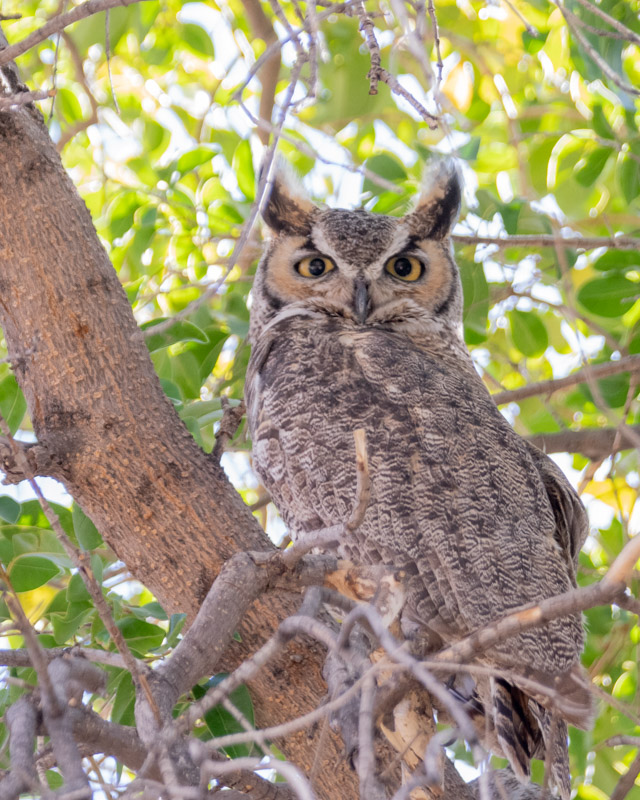
I could not approach that pine tree because it was on the grounds behind a locked gate. Soon, though, I was able to spot the female Great Horned Owl that the male had been staring at. I could not locate her nest but it must be somewhere hidden behind the thick foliage.
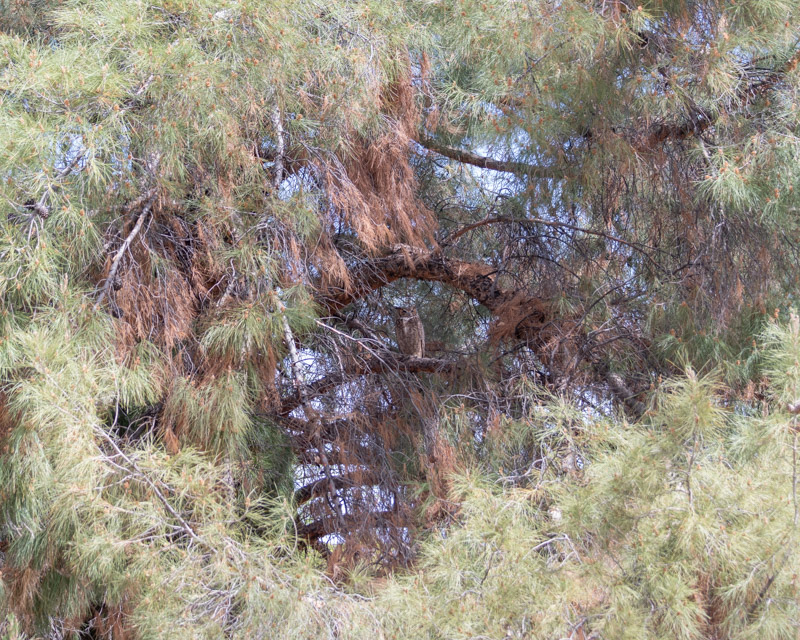
By walking along the outside of the fence, I was able to find a spot where the owl was in the open, with no branches or needles obscuring her. Having a telephoto lens helped me get a closer look. Notice that long vertical part in her feathers, running the length of her body? That is her brood patch. “A brood patch is a patch of featherless skin on the underside of birds during the nesting season. Feathers act as inherent insulators, and prevent efficient incubation. Birds have solved this evolutionary dilemma by developing dedicated brood patches. This patch of skin is well supplied with blood vessels at the surface, enabling heat transfer to the eggs when incubating.” (from wikipedia)
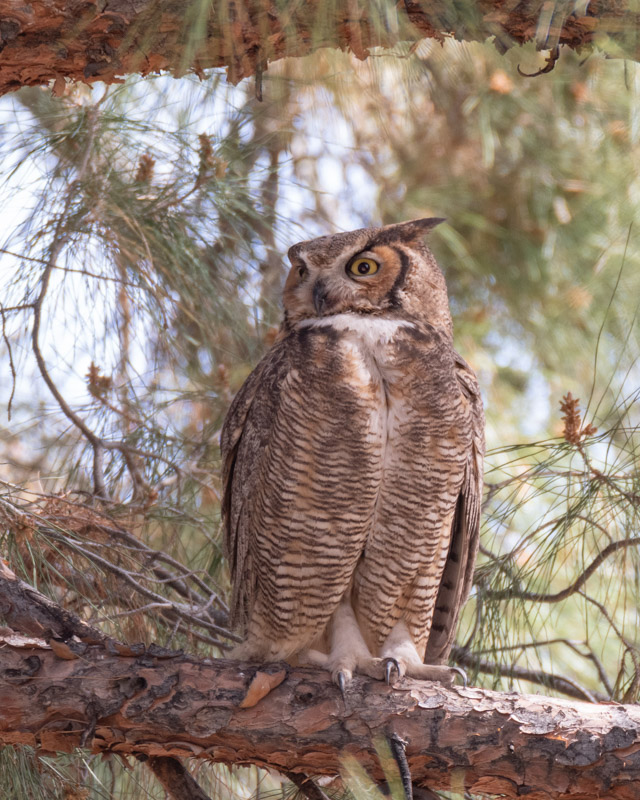
While I was watching her, she spent quite a bit of time preening, cleaning her feathers and setting them in place. Owls can turn their heads 270°- not quite a full circle. They have 14 bones in their neck, allowing for this ability. We humans only have 7 bones in our neck. (There was a hummingbird flitting around her at that time too, so the owl did look at her while she was going about her business.)
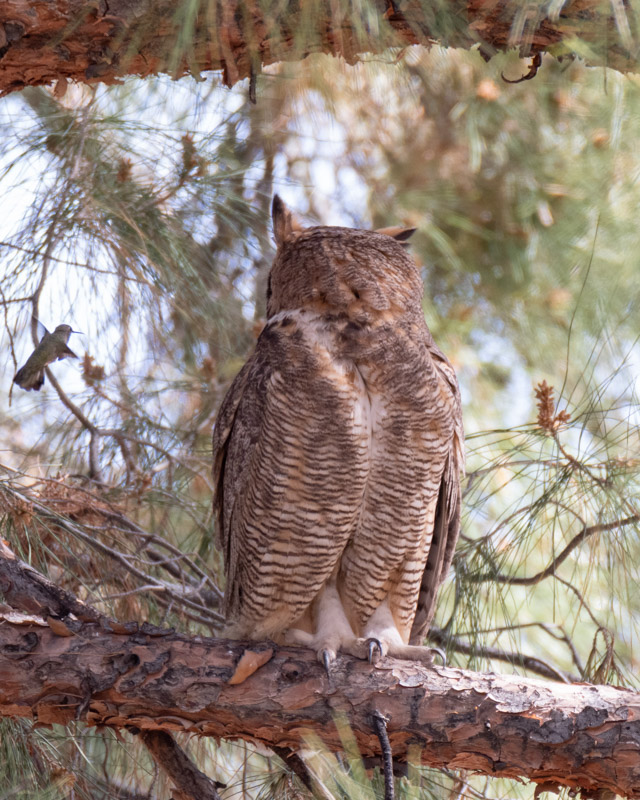
And while facing backwards, she continued to preen, taking each feather in her bill and ‘combing’ it. I like how her plumicorns (ear tufts) look in this pose. All of her feathers look to be puffed out now.
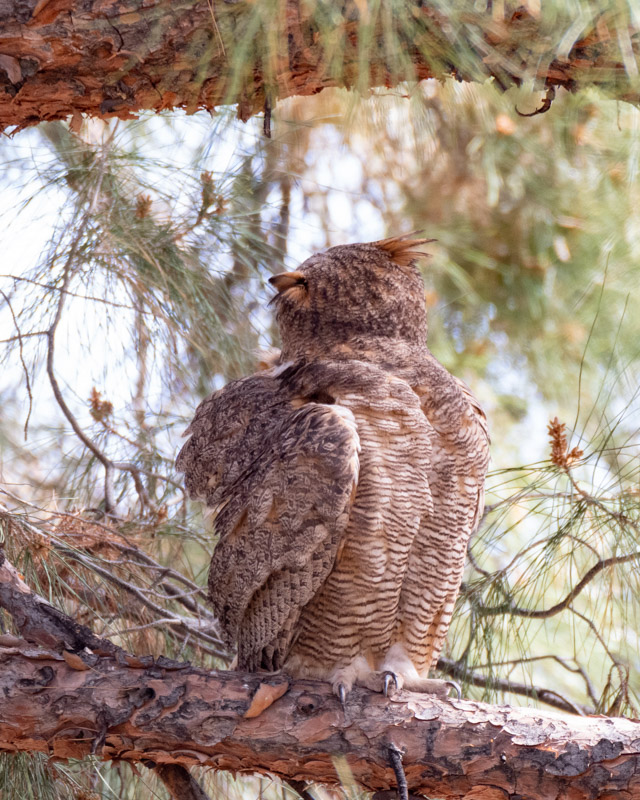
Pretending to be Ichabod Crane (the Headless Horseman), her head dropped even further down.
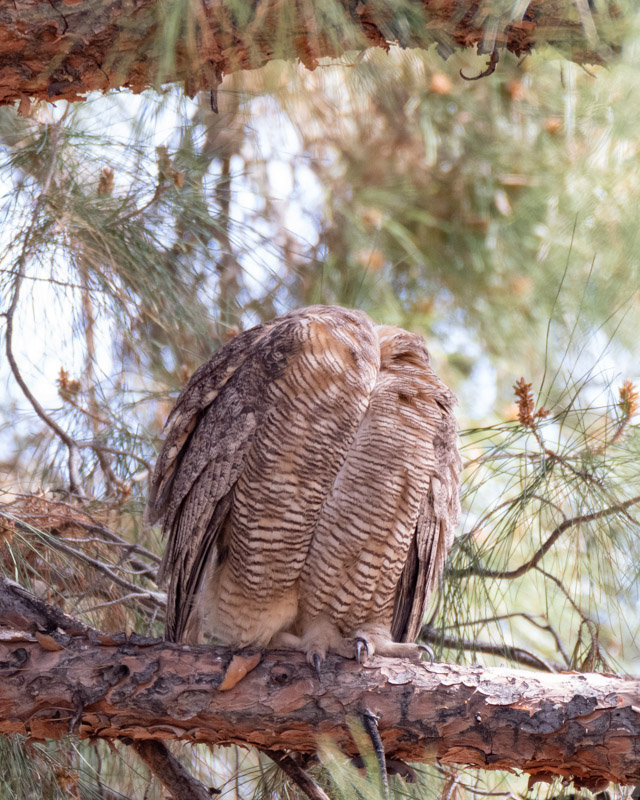
It took me a while to figure out what was happening in this next shot. If you look closely, you can see her shiny gray bill in the upper left edge of her head and one plumicorn on the upper right. She ws mostly facing forward but her head is thrown back as far as it can go and her white neck feathers are all poofed out.
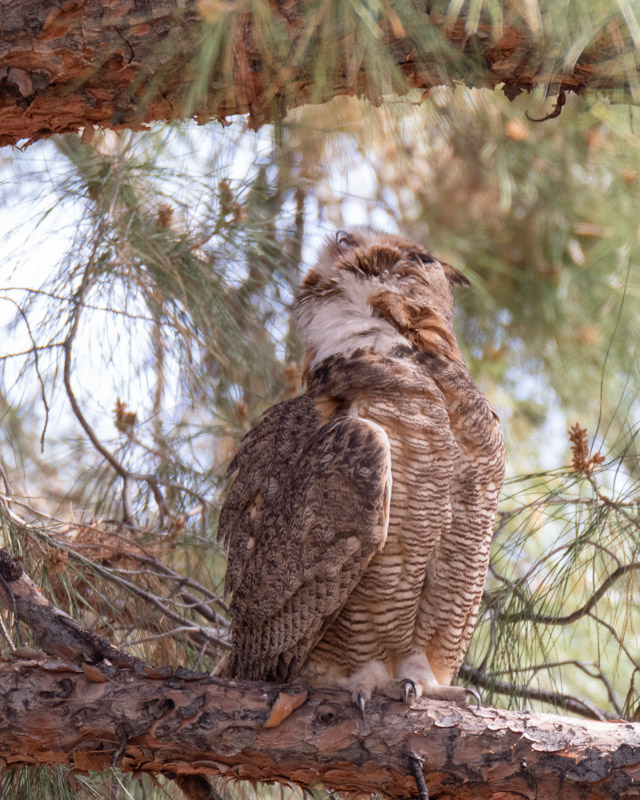
Standing on one foot while holding the other foot in a fist, she gives all of her feathers a shake to set them in place. In this pose, you can see how thick her feathers are and how deep the feathers on her breast are.
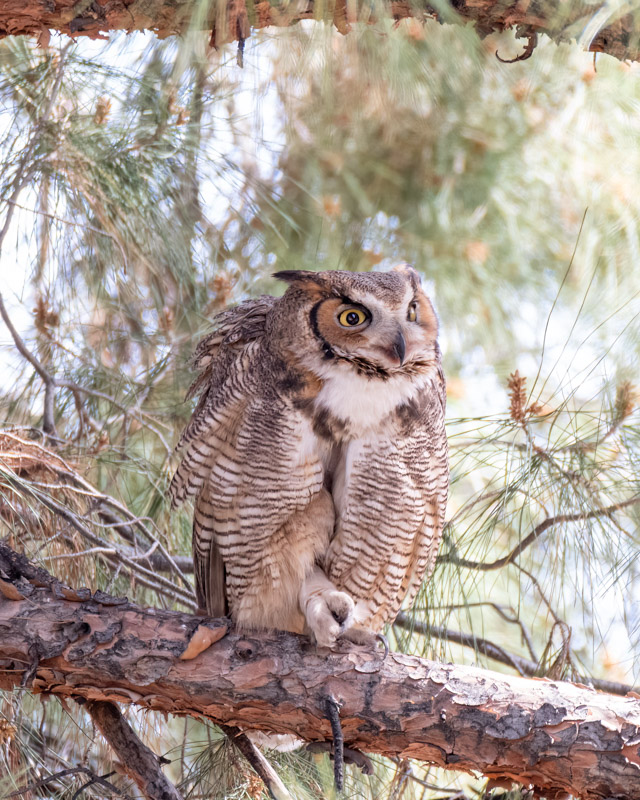
Finally relaxed, she gave me a long look. This portrait shows her brood patch and the softness of her feathers. Her plumage is more brown than her mate’s, who had predominantly gray feathers. Great Horned Owls have big yellow eyes and a large facial disc, marked by the black feathers making a circle around her face. The facial disc is a structure that helps bring all sound to her ears that are situated below and to the sides of her eyes. The feather tufts on her head (the “horns” in her name) have nothing to do with her ears or her hearing. And look at those talons!!
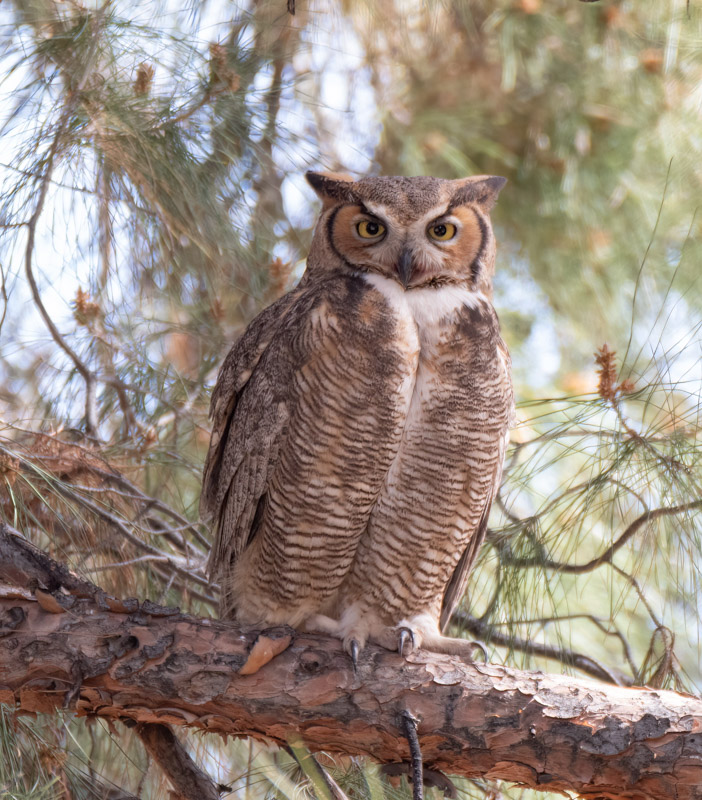
This is one beautiful bird!!
